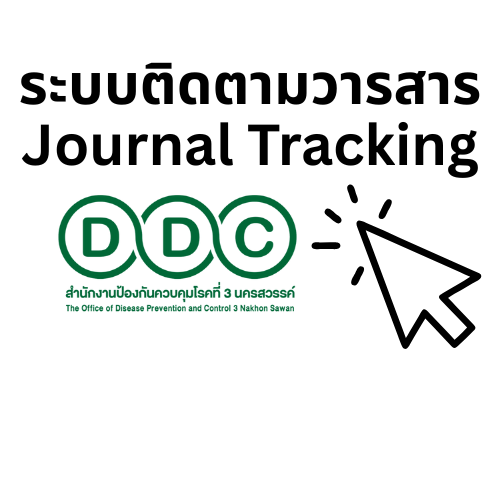Municipal Solid Waste Management: A Case Study of Rangsit City Municipality
Keywords:
Solid Waste, Solid waste management systemAbstract
The objective of this research was to study municipal solid waste management system of Rangsit City Municipality during 1 January – 31 December 2018. The secondary data was collected of solid waste management from the database of Rangsit City Municipality. Sampling ,and analizing physical composition of Rangsit municipality solid waste from various sources, including communities, shopping malls ,fresh markets, condominiums, establishments, temples, and schools. The data were analyzed by percentage, mean, and standard deviation. The result showed that total solid waste collected from Rangsit City Municipality in 2018, 59,819 tons per year, the average amount of solid waste was 164 ± 8.50 tons per day and the solid waste generation rate was 1.98 ± 0.11 kilograms per person per day. The physical composition of Rangsit Municipality solid waste consisted of organic waste, waste recycling, general waste, and hazardous waste 36.65%, 32.74%, 30.25%, and 0.36%,by weight respectively. There were 22 waste collection routes in total. There was 26 collection vehicles: 22 active vehicles and 4 reserve vehicles which are divided into 5 container garbage trucks and 21 compact garbage trucks. The maximum diesel consumption rate was 9.14 liters per tons of solid waste, and the minimum was 1.43 liters per tons of solid waste. The diesel consumption rate was an average of 3.79 ± 2.03 liters per tons of solid waste. The maximum natural gas consumption rate was 10.38 kilograms per tons of solid waste, and the minimum was 1.84 kilograms per tons of solid waste. The natural gas consumption rate was an average of 7.76 ± 2.66 kilograms per tons of solid waste.Solid waste was collected from the sources ,and transport to the transfer station to compress before transport to disposal site. The amount of solid waste after compression was 52,600 tons per year ,and average 144 ± 8.46 tons per day. Solid waste was disposed with landfilling methods by a private sector. The distance from transfer station to the disposal site was 40 kilometers ,and consume diesel at the average consumption rate of 2.69 ± 0.40 liters per tons of solid waste. There were 471 tons of recyclable waste that separated by workers at disposal site consist of glass bottles, paper, cans, plastic, and metal. The plastic bags were sorted ,and transform to Refuse Derived Fuel (RDF) for a total of 3,137 tons per year. Rangsit City Municipality compost organic waste 74 tons per year to be biogas,19 tons per year for earthworms ,and 499 tons per year feed stray dogs.
References
AR Darban Astane, M. Hajilo.Factors affecting the rural domestic waste generation.Global J. Environ Sci Manage 2017; 3:417-26.
กรมควบคุมมลพิษ. สถานการณ์ขยะมูลฝอยชุมชน ของเสียอันตราย และสารอันตราย.รายงานสถานการณ์มลพิษของประเทศไทยปี 2560:23-8.
Dhokhikah Y, Trihadiningrum Y. Solid Waste Management in Asian Developing Countries: Challenges and Opportunities. Journal of Applied Environmental and Biological Sciences 2012 ; 2:328-35.
Intergovernmental Panel on Climate Change. IPCC Guidelines for National Greenhouse Gas InventoriesVolume 5 Waste [Internet]. 2006[cited 2018 Dec 27]. Available from: https://www.ipcc-nggip.iges.or.jp/public/2006gl/vol5.html.
Hoklis C, Sharp A. Greenhouse Gas Emission from Municipal Solid Waste in Phnom Penh, Cambodia. GMSARN International Journal 2014; 8: 73 – 8.
Tan ST, Hashim H, Lim JS, Ho WS, Lee CT, Yan J. Energy and emissions benefits of renewable energy derived from municipal solid waste: Analysis of a low carbon scenario in Malay-sia. Applied Energy 2014; 136: 797-804.
Thanh HT ,YabarH, Higano Y, Mizunoya T. Potential of Greenhouse Gas Emissions Reduction Associated with Municipal Solid Waste Management in Hanoi City, Vietnam Journal of Scientific Research & Reports 2015; 8: 1-10.
Michael Arieh ,P. Medina , Ronald C Forten. Estimating Methane Gas Emission from Sol-id Waste Generated by Household in an Urban Village in Bukidnon, Philippines. American-EurasianJ.Ag-ric.& Environ Sci 2015; 15: 837-42.
สำนักงานคณะกรรมการกฤษฎีกา.พระราชบัญญัติรักษาความสะอาดและความเป็นระเบียบเรียบร้อยของบ้านเมือง พ.ศ.2535[อินเทอร์เน็ต]. [สืบค้นเมื่อวันที่ 22 ธ.ค. 2561]; เข้าถึงได้จาก :http://web.krisdika.go.th/data/law/law2/%C316/%C316-20-9999-update.pdf.
Khajuria A, Yamamoto Y, Morioka T. Estimation of municipal solid waste generation and landfill area in Asian developing countries. Journal of Environmental Biology 2010; 5: 649-54.
กรมควบคุมมลพิษ. สถานการณ์ขยะมูลฝอยชุมชน ของเสียอันตราย และสารอันตราย.รายงานสถานการณ์มลพิษของประเทศไทยปี 2561:35-7.
สำนักสิ่งแวดล้อม กรุงเทพมหานคร.สถิติปริมาณมูลฝอยประจำปีงบประมาณ 2561 [อินเทอร์เน็ต]. 2561 [สืบค้นเมื่อวันที่ 15ก.ย. 2562]; เข้าถึงได้จาก: http//www.bangkok. go.th/upload/user/00000231/data/waste61.pdf.
กรมการปกครอง.ระบบสถิติทางการทะเบียน[อินเทอร์เน็ต].2561 [สืบค้นเมื่อวันที่ 15ก.ย. 2562].เข้าถึงได้จาก:http://stat.dopa.go.th/stat/statnew/upstat_age.php.
Hoklis C, Sharp A. Greenhouse Gas Emission from Municipal Solid Waste in Phnom Penh, Cambodia. GMSARN International Journal 2014; 8: 73 – 8.
Thanh HT YabarH, Higano Y, Mizunoya T. Potential of Greenhouse Gas Emis-sions Reduction Associated with Municipal Solid Waste Management in Hanoi City, Vietnam. Journal of Scientific Research & Reports 2015; 8: 1-10.
Babel S, Vilaysouk X. Green-house gas emissions from municipal solid waste management in Vientiane, Lao PDR. Waste Man-agement & Research 2015 ; 1: 1-15.
Downloads
Published
How to Cite
Issue
Section
License
Copyright (c) 2020 Journal of Disease and Health Risk DPC.3

This work is licensed under a Creative Commons Attribution-NonCommercial-NoDerivatives 4.0 International License.
Copyright notice
Article published in the Journal of Disease and Health Risk DPC.3 Nakhon Sawan. It is considered a work of academic research and analysis as well as the personal opinion of the author. It is not the opinion of the Office of Disease Prevention and Control 3, Nakhon Sawan. Or the editorial team in any way Authors are responsible for their articles.
Privacy Policy
Name, address and e-mail address specified in the Journal of Disease and Health Risk DPC.3 Nakhon Sawan. It is used for identification purposes of the journal. And will not be used for any other purpose. Or to another person.









